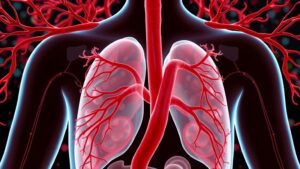Clogged arteries often start quietly, with plaque building up over time before any warning signs appear. Some people feel chest pain or shortness of breath, while others just notice they’re more tired than usual. The causes range from high cholesterol and inflammation to smoking, stress, or even genetics. Lifestyle choices like poor diet or lack of exercise can speed up the problem. But how do doctors detect these concealed blockages before they turn dangerous? The responses could astonish you.
Common Symptoms of Clogged Arteries
As arteries become clogged, the body frequently sends warning signs, though some individuals may not detect them immediately. Chest pains, often described as pressure or tightness, are a common symptom, especially during physical activity or stress.
Shortness of breath may also occur, as narrowed arteries struggle to supply enough oxygen to the heart and lungs. These symptoms can worsen over time if left unchecked, making daily tasks like climbing stairs or walking feel exhausting. Some people mistake these signs for fatigue or aging, delaying medical attention.
Recognizing these signals promptly is vital, as they often point to reduced blood flow from plaque buildup. Ignoring them increases the risk of more severe complications, so consulting a doctor quickly is advised.
Less Obvious Signs of Artery Blockages
Some artery blockages develop without noticeable symptoms, making them harder to detect prematurely.
Persistent fatigue that doesn’t improve with rest can sometimes signal reduced blood flow from clogged arteries. These less obvious signs often go overlooked until more serious complications arise.
Silent Artery Blockages
Silent artery blockages often slip under the radar, quietly building up without obvious warnings. Gradual plaque accumulation narrows arteries over time, yet many experience no symptoms—these asymptomatic artery blockages can go unnoticed until a serious event occurs. Without pain or discomfort, the body might not signal danger, making routine check-ups essential.
| What Happens | Why It’s Dangerous | Who’s at Risk |
|---|---|---|
| Plaque builds silently | No warning signs | Older adults |
| Blood flow reduces | Risk of heart attack | Smokers |
| Arteries stiffen | Stroke potential | Diabetics |
| Organs get less oxygen | Sudden collapse | High blood pressure |
Early detection through tests like cholesterol screenings or imaging can reveal concealed risks. Lifestyle changes and medical guidance help manage silent threats before they escalate.
Unusual Fatigue Indicators
Fatigue that doesn’t go away with rest could be more than just exhaustion—it might signify concealed artery trouble. Whenever blood flow to muscles and organs slows due to clogged arteries, the body struggles to keep up, leading to unusual fatigue severity.
Unlike regular tiredness, this fatigue lingers even after adequate sleep or light activity. Individuals may notice unusual fatigue patterns, like sudden exhaustion after minimal effort or feeling drained without clear reason. It often worsens gradually, making it easy to overlook as stress or aging.
Yet, when paired with other subtle signs—shortness of breath, dizziness, or cold limbs—it warrants attention. Identifying these less obvious clues early on can help address underlying artery blockages before they escalate into serious heart issues.
Major Causes of Clogged Arteries
Although many people assume clogged arteries only affect older adults, the process often starts much sooner due to everyday habits. The primary cause is fatty plaque buildup, where cholesterol deposition and other substances stick to artery walls, narrowing blood flow over time. This condition, called atherosclerosis, develops silently but can lead to serious heart problems.
High cholesterol levels: Excess LDL (“bad” cholesterol) sticks to artery walls, forming plaque.
Inflammation: Conditions like high blood pressure or diabetes damage artery linings, making plaque buildup easier.
Genetics: Family history can increase the risk of premature cholesterol deposition, even with healthy habits.
Other contributors include smoking, which damages blood vessels, and chronic stress, which may exacerbate inflammation. While some factors can’t be changed, comprehending them aids in early prevention.
Lifestyle Factors Contributing to Artery Buildup
Why do seemingly harmless daily habits quietly speed up artery clogging? Sedentary lifestyle habits, like sitting for long hours without movement, slow blood flow and allow fatty deposits to stick to artery walls.
Poor dietary choices, such as eating processed foods high in trans fats and sugar, increase cholesterol levels, thickening the blood and narrowing arteries over time. Smoking and excessive alcohol use also damage blood vessels, making them more prone to buildup. Even stress plays a role by triggering inflammation, which hardens artery walls.
Small, repeated choices—skipping walks, grabbing fast food, or disregarding sleep—add up silently. While these factors don’t cause immediate harm, they create a gradual, dangerous clogging process that often goes unnoticed until symptoms appear. Awareness and timely changes can make a big difference.
Medical Conditions Linked to Clogged Arteries
Several medical conditions greatly increase the risk of clogged arteries, including high blood pressure, diabetes complications, and high cholesterol levels. These conditions can damage blood vessel walls or contribute to plaque buildup over time.
Comprehending their impact helps explain why artery health differs from person to person.
High Blood Pressure
High blood pressure quietly damages arteries over time, making them more likely to clog. The constant force of elevated pressure weakens artery walls, creating tiny tears where plaque can build up. Over years, this narrows the arteries, restricting blood flow and increasing the risk of heart disease or stroke.
Diet modification plays a key role—reducing salt, processed foods, and saturated fats helps lower pressure.
Stress management is paramount, as chronic stress keeps pressure high, straining the arteries.
Regular exercise strengthens the heart, allowing it to pump blood more efficiently with less force.
Left unchecked, high blood pressure accelerates artery damage, often without obvious symptoms. Monitoring pressure levels and making lifestyle adjustments can greatly reduce risks. Timely intervention prevents long-term harm, keeping arteries clearer and healthier.
Diabetes Complications
Diabetes weaves a dangerous web in the body, often silently damaging arteries and setting the stage for serious complications. High blood sugar from diabetes harms blood vessels, making them stiff and narrow, which can lead to clogged arteries.
Insulin resistance, a hallmark of type 2 diabetes, worsens this by increasing inflammation and fatty deposits in artery walls. Over time, this raises the risk of heart disease and stroke. Kidney disease is another common complication, as damaged arteries reduce blood flow to the kidneys, impairing their function.
Symptoms like fatigue, swelling, or frequent infections may signal trouble. Managing blood sugar, diet, and exercise helps slow damage, but prompt detection is key to preventing severe consequences. Regular check-ups can catch problems before they escalate.
High Cholesterol Levels
Excess cholesterol in the bloodstream quietly builds up over time, sticking to artery walls and narrowing the passage for blood to flow. High cholesterol levels, often caused by fatty diet choices or genetic factors, contribute drastically to clogged arteries. Without proper cholesterol medication management, this buildup can lead to serious heart complications.
Dietary Impact: Consuming too much saturated fat from processed foods or red meat raises LDL (“bad”) cholesterol, accelerating plaque formation.
Genetic Factors: Some people inherit conditions like familial hypercholesterolemia, making it harder to control cholesterol inherently.
Lifestyle Adjustments: Regular exercise and fiber-rich foods help lower cholesterol, but medication may still be essential for some.
Early detection through blood tests and proactive changes can prevent severe artery blockages. Ignoring high cholesterol risks heart attacks or strokes, rendering awareness indispensable.
Diagnostic Tests for Detecting Clogged Arteries
| Test | Purpose | Best For |
|---|---|---|
| Cardiac stress test | Measures heart function | Detecting concealed issues |
| Abdominal imaging | Checks aorta for blockages | Identifying aneurysms |
| Blood tests | Reveals cholesterol levels | Evaluating risk factors |
These tests help identify problems promptly, allowing for timely treatment. Doctors choose based on symptoms and risk factors to guarantee precise results.
Imaging Techniques Used in Diagnosis
Imaging techniques provide a closer look inside the body, helping doctors spot blockages in arteries that could not appear in other tests. These methods create detailed representations of blood vessels, revealing narrowed or clogged areas.
Ultrasound imaging uses sound waves to show blood flow, often checking arteries in the neck or legs.
CT angiography combines X-rays and dye to produce 3D images of the heart and arteries, highlighting any obstructions.
Magnetic resonance angiography (MRA) uses magnets and radio waves for clear views without radiation, ideal for sensitive cases.
These tools help pinpoint issues promptly, guiding treatment before symptoms worsen. Doctors choose the best method based on a patient’s condition, ensuring accurate and safe diagnosis.
When to Seek Medical Attention for Symptoms
How soon should someone worry as their chest feels tight or their legs cramp during a brief walk? If these symptoms appear suddenly or worsen rapidly, emergency medical care is necessary—especially with chest pain, shortness of breath, or dizziness, which could signal a heart attack.
For milder but persistent issues, like leg pain while walking or occasional chest discomfort, scheduling an in-office consultation with a doctor is wise. Ignoring symptoms risks complications, as clogged arteries reduce blood flow over time. Early evaluation helps prevent severe outcomes.
Even if discomfort seems trivial, discussing it ensures prompt tests and treatment. Trusting instincts matters—if something feels off, seeking professional advice is always better than waiting.
Conclusion
Clogged arteries are like silent thieves, stealing health without warning. Identifying symptoms promptly and tackling causes can turn the tide, giving the heart a fighting chance. Lifestyle changes and medical care act as shields, protecting against unseen dangers. Remaining informed and proactive secures the body’s pathways remain clear, letting life flow freely.




